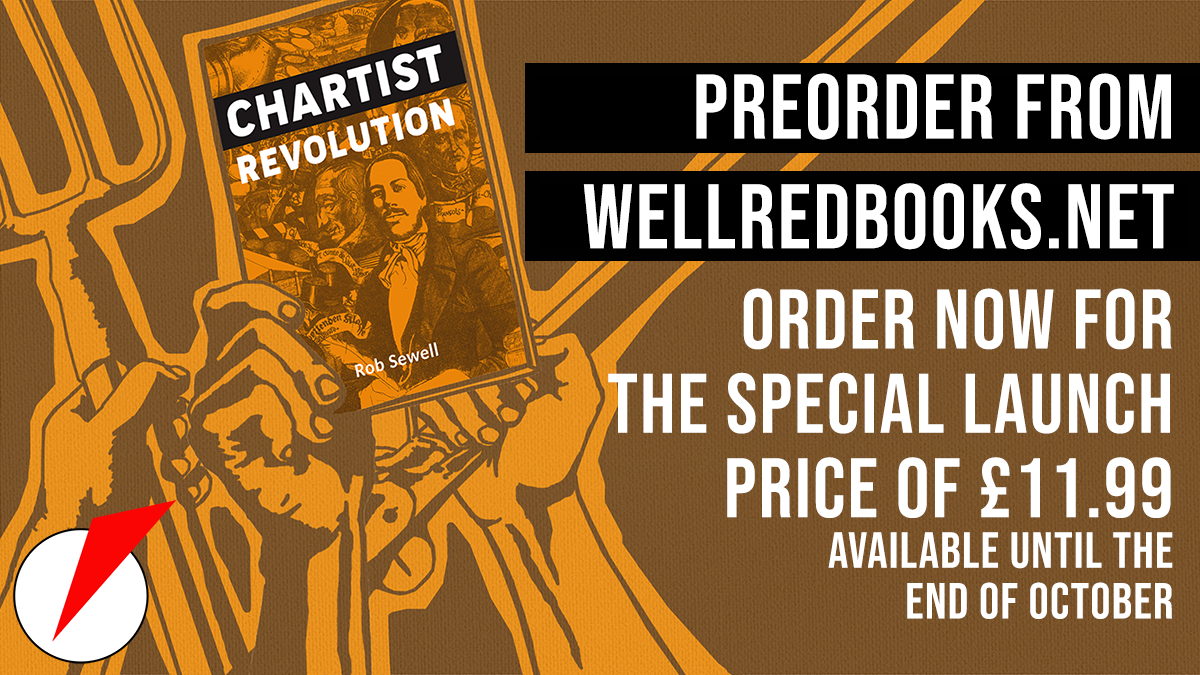We are excited to announce the publication of a new book on Chartism – a titanic struggle by British workers in the 1800s that involved arming, general strikes and insurrection, a fact buried by official “histories” – by Rob Sewell, editor of Socialist Appeal, British publication of the International Marxist Tendency. In this review, Socialist Appeal writer and activist Josh Holroyd explains the importance of this new book, which reclaims the revolutionary history of the British labour movement. Until the end of October, Chartist Revolution is available for pre-order at Wellred books for a special discounted price!
The publication of a new book on Chartism by Rob Sewell could not come at a more important time from the standpoint of the British labour movement. Today, the deepest crisis of British capitalism in history coincides with a dramatic shift to the right in the leadership of the Labour Party, and a period of questioning and uncertainty amongst the Left.
In politics as in life, it is necessary to “know thyself”, as the saying goes. This applies to whole classes as well as to individuals. For the labour movement to succeed it cannot afford to be educated by its enemies. We must therefore have a firm grasp of our own history. And there is perhaps no period in history more inspiring, and more full of lessons, than that of Chartism, the Heroic Age of the British working class.
Class movement
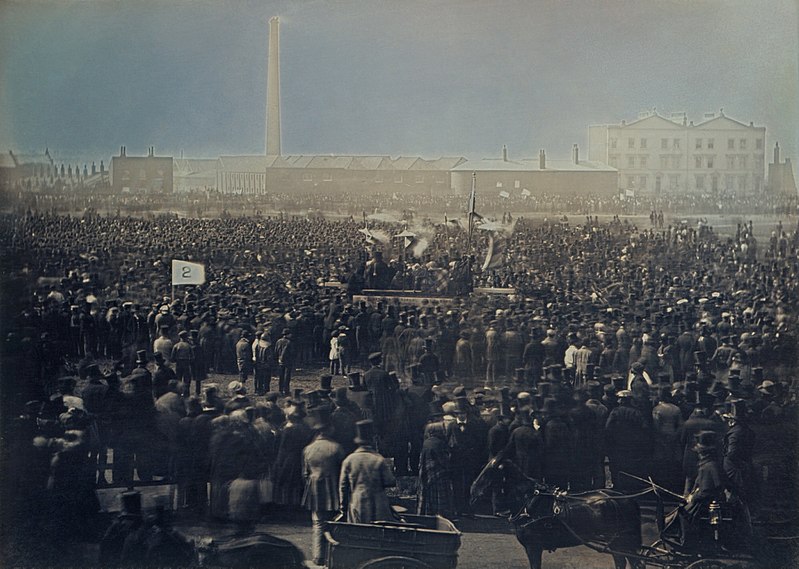 Chartism was an internationalist class movement, forged over a series of hard lessons, such as the Peterloo massacre of 1819 / Image: public domain
Chartism was an internationalist class movement, forged over a series of hard lessons, such as the Peterloo massacre of 1819 / Image: public domain
The real history of Chartism is usually obscured, with the movement presented as nothing more than a campaign for the vote. But while universal male suffrage was certainly its primary demand, from its very beginning the Chartist movement aimed at far more than a formal extension of democracy.
Behind the purely democratic demands contained in the People’s Charter of 1838, such as the secret ballot and the payment of MPs, stood millions of working men and women, whose flesh and blood were being quite literally devoured by the insatiable capitalist drive for profit. As Sewell notes, “It was the heroic efforts alone of these proletarians that made the Chartist movement into the mass force it was destined to become.” This gave the movement for the Charter a fundamentally different character to even the most radical bourgeois democrats. It was a class movement, forged over a series of hard lessons, such as the Peterloo massacre of 1819.
As the Chartist Reverend Stephens announced to a crowd of 200,000 in Lancashire: “This question of universal suffrage is a knife and fork question, a bread and cheese question”. One worker put it even better, declaring the aim of the Charter to be “plenty of roast beef, plum pudding and strong beer by working three hours a day.” As Engels explained at the time: “‘Political power our means, social happiness our end,’ is now the clearly formulated war-cry of the Chartists.” We would do well to take up this war-cry once more.
Another remarkable feature of Chartism was its internationalism. An oft-repeated slander against the British working class is that it is by nature narrowly patriotic and distrustful of foreigners. The history of Chartism explodes this myth, which comes not from the workers at all but from the bosses and billionaire press barons. Two of the most outstanding leaders of the Chartist movement, James Bronterre O’Brien and Feargus O’Connor, were Irishmen, and the demand for the repeal of the Union with Ireland (the end of colonial rule) was even included in the second Chartist petition, which garnered over 3 million votes.
The Chartists took notice of developments beyond these islands as well. Revolutionary events in France, Poland and Hungary were followed closely. This was a movement that saw itself as proletarian and international, a link in the chain of a worldwide revolution against tyranny and exploitation years before Marx famously wrote “workers of the world unite”.
Reform or revolution
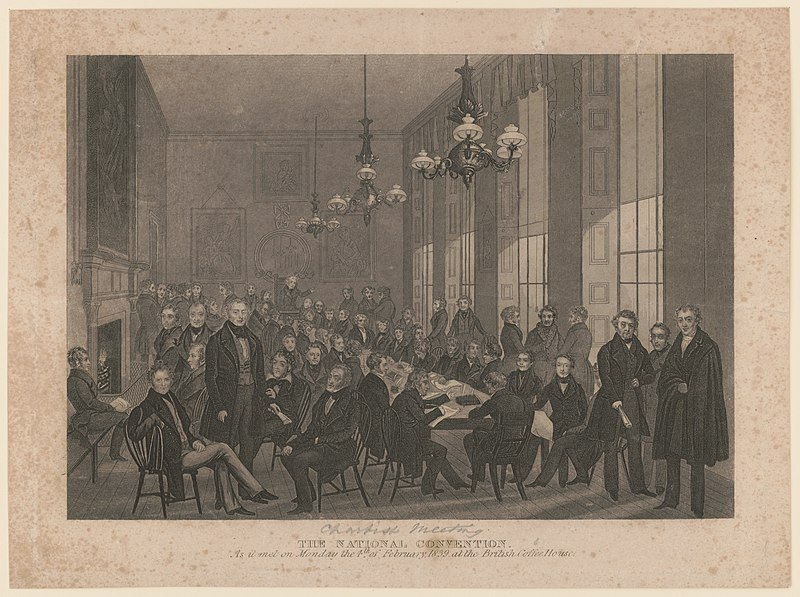 In 1839, the Chartists called a national “Convention” in a deliberate nod to the Jacobins of the French Revolution / Image: public domain
In 1839, the Chartists called a national “Convention” in a deliberate nod to the Jacobins of the French Revolution / Image: public domain
Chartism was a mass proletarian movement with the clear aim of transforming society for all, arguably the first of its kind. But the struggle does not end there. From the very beginning the history of Chartism is characterised by a fierce debate over how exactly this task could be achieved.
Perhaps in no other period of British history has the question of reform or revolution been debated as openly as in the insurrectionary year of 1839. As the first Chartist petition was touring the country, adding more than a million signatures to its swelling rolls, a national “Convention” was called in a deliberate nod to the Jacobins of the French Revolution. As the delegates assembled from mass workers’ meetings up and down the country, the most pressing question of the day burst to the fore: what to do if parliament rejected the petition?
This immediately provoked a split between the “moral force” Chartists, who proposed that the Convention dissolve itself, having supposedly achieved its purpose, and the “physical force” Chartists who called for further action to carry the Charter despite the opposition of the parliament of landlords and millowners. Sewell remarks: “In effect, the Convention had now become a forum, debating the pros and cons of revolution and the next steps to be taken.”
At the Convention and in the country, the physical force Chartists easily carried the day. Weak and isolated, the representatives of moral force left the Convention. The mood was summed up by Henry Vincent, who explained that “in every town” the workers had “an apparent fixed resolution to appeal to arms should this last moral effort fail…”
But the question of what exactly to do remained. Chartism’s most openly revolutionary wing, led by the young firebrand Julian Harney, even called for the Convention to declare itself a workers’ parliament and overthrow the old regime. One handbill, circulating in May 1839, read: “Be patient a day or two, but be ready at a minute’s warning; no man knows today what tomorrow may bring forth: be ready then to nourish the tree of liberty, WITH BLOOD OF TYRANTS.” This was no idle threat. Reports of workers arming themselves were pouring in from alarmed authorities and police spies up and down the country.
When the petition was rejected on 12 July, as expected, the delegates of the Convention prevaricated, unsure of how to transform their revolutionary words into action. The idea of a general strike, or “holy week”, was placed on the agenda, only to be abandoned. But in November 1839, the threat of insurrection was transformed into reality when thousands of Chartist workers, armed and marching in formation, attempted to take the town of Newport and begin a nationwide revolt. This attempt would go down to defeat, but the ghost of Newport would haunt the country for years to come.
Organisation
Marx and Engels comment in the Communist Manifesto that, with every struggle against the bosses, the working class strives towards greater unity and organisation, first in an industrial and later also a political form. Chartism provides us with a vibrant record of this process.
The failure of the first Convention and the inevitable wave of arrests and reaction that followed left the movement with hard questions to answer. The workers had petitioned parliament, elected their own representatives and even prepared for violent insurrection, but the loose structure of the movement had posed an obstacle for unified and decisive action.
This led thousands of Chartists to draw the conclusion that something more was needed: a centralised political organisation with its own membership, leadership and programme, devoted entirely to the winning of the Charter. This organisation was the National Charter Association (NCA), founded in 1840. At its height, the NCA boasted 50,000 members organised in 500 “classes”, or branches. The first ever political party of the working class had been born.
The Chartist movement was also bolstered by its own press, with O’Connor’s Northern Star representing the most influential of the Chartist papers and, in effect, the official organ of the NCA. This press acted not only as a collective propagandist and agitator, but also as a collective organiser. Reports of workers’ meetings and resolutions filled the Star’s pages and lively polemics on strategy and tactics were read avidly by thousands of Chartist workers.
Again, a comparison must be made with today. If ever the need for an independent workers’ press could be seen in Britain, it would be over the last five years, in which an implacable and ferocious campaign was waged against Corbyn and the Left by the entirety of the capitalist media. The answer of the present leadership of the Labour Party has been to simply adopt the demands and prejudices of that same media in the hope that it will win their affection. Such behaviour would have been met with derision and disgust amongst the Chartists. And rightly so!
The General Strike
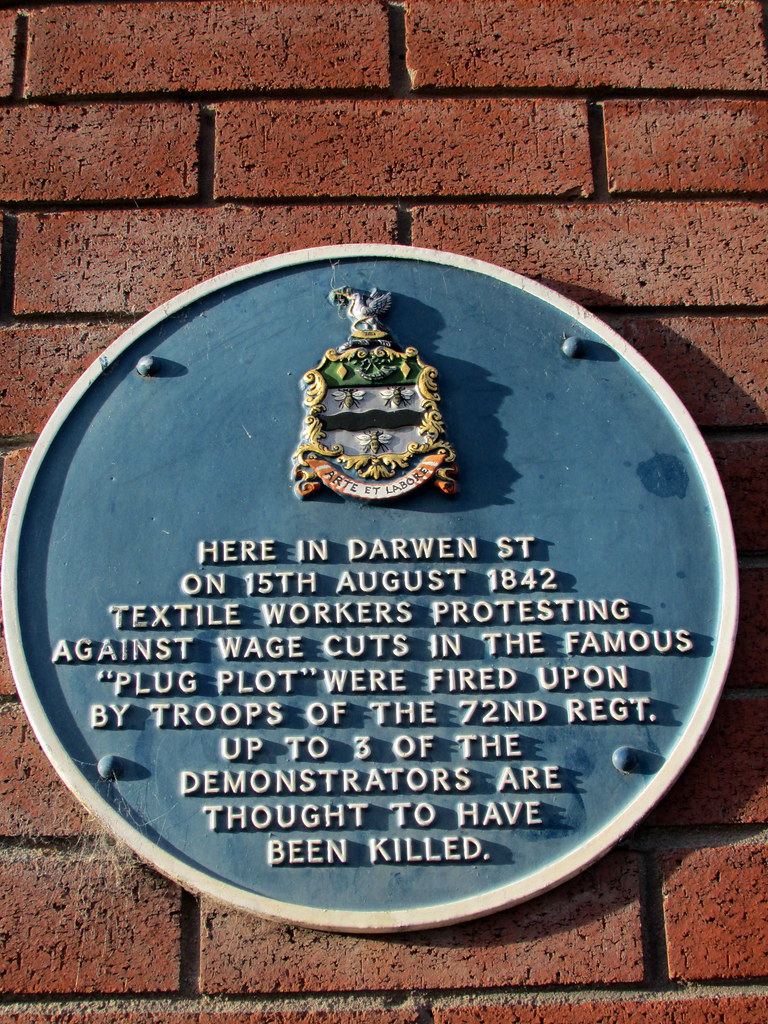 1842 saw a political general strike, a revolutionary development, and the establishment of dual power. The workers' defeat reflected the inexperience of their leaders, who were pioneers of the struggle / Image: Picasa Flickr
1842 saw a political general strike, a revolutionary development, and the establishment of dual power. The workers' defeat reflected the inexperience of their leaders, who were pioneers of the struggle / Image: Picasa Flickr
It is often said that, after the experience of the Civil War, the British people have spurned revolution. This is a lie. Revolution swept over Britain once more in 1842, when in response to a 25 percent wage cut, the workers of Lancashire downed tools, and began what would become the first general strike in the history of capitalism.
The “Plug Plot”, so-called because the workers would pull the plugs out of the steam boilers in order to stop work at the factories, rapidly brought the whole of Manchester to a standstill and continued to spread across the country. Sewell states: “At its height, the strike movement embraced up to half-a-million workers and covered an area from the Scottish coalfields to the tin mines of Cornwall.”
But a general strike is not like any other strike. If a normal strike poses the question of who is really in charge on the factory floor, a general strike poses the question of who runs society altogether. This was understood by the Chartists themselves, with one declaring that the strike was “nothing more nor less than the commencement of a revolution”.
Striking workers organised themselves into assemblies for the purpose of maintaining the strike, and deciding on the next steps to be taken. These bodies were embryos of workers’ power: the first ever instance of what would later go by the Russian name of “soviets”. At these assemblies, striking workers announced their determination, not simply to return to the wages of 1840, but for the Charter to become the law of the land. This was a political general strike, aiming at nothing less than the overthrow of the existing order for the benefit of the working class. This was a revolution.
Leadership
In August 1842 there were, in effect, two powers in Britain: the state, with its army, police and courts; and the workers’ strike committees. Local factory owners had to apply to these committees for permission to restart work, whilst shopkeepers contributed food and other necessities to the strike, voluntarily or not.
However, such a situation of “dual power” cannot last indefinitely, as Sewell explains in his chapter on the Plug Plot, which is a particular highlight. One side must defeat the other. And in this struggle, the all-important question of leadership is posed point blank. On this question as with many others, the history of Chartism contains a great many lessons.
Insurrection, as Marx explained, is an art. It must be planned in advance. At a certain stage a date must be set and plans coordinated in order to ensure the first to rise are not isolated and crushed. Having risen, the workers looked to the NCA for a lead, but confronted with the concentrated force of the state, even the most outspoken physical force men lost their nerve and allowed the workers to be starved and beaten back to work for fear of a civil war they expected to lose.
This was no cowardly betrayal however, as tragic as the defeat was. The truth is that nothing of this sort had ever been done before. The Chartist leaders were pioneers, “groping for a solution” to use Sewell’s expression. Despite their genuine courage in the face of extreme repression, they simply did not know how to proceed from the obvious potential for insurrection to victory, and for this the movement paid dearly.
These figures, for all their weaknesses and limitations, stand like titans above the cringing imps at the head of the present Labour movement. If they faltered in the heat of revolution it was because they could not pierce the veil of uncertainty that lay before them. That veil was tilted in 1871, when the workers of Paris “stormed heaven”, in the words of Marx. In Petrograd 1917, the veil was torn forever. Today, we can see further than our Chartist predecessors, but only if we learn the lessons of the past.
Marxism and Chartism
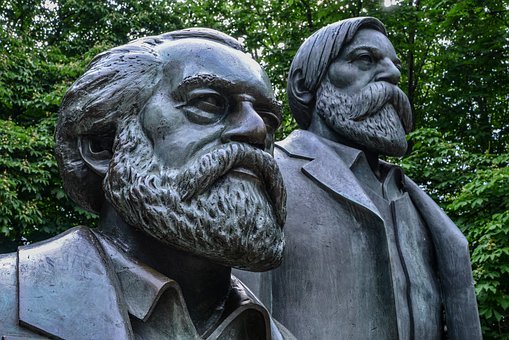 Sewell explores the relationship between Chartism and Marxism
Sewell explores the relationship between Chartism and Marxism
Another fascinating aspect of the history of Chartism is its relationship with Marxism, which Sewell explores in detail. It has long been common in the British labour movement to say that it “owes more to Methodism than Marxism”. This prejudice contrasts sharply with reality, as Sewell demonstrates by reference to the close links between Chartism and Marxism.
Marx and Engels collaborated closely with two of the most influential Chartists of the period: Julian Harney and Ernest Jones. They wrote in the Chartist press, including the Northern Star, and their ideas had a significant impact on the NCA as it turned openly towards socialism after the defeat of the third and final petition of 1848. But likewise, Chartism had an influence on Marxism as well. Marx’s and Engels’ vision for the emancipation of the working class came from the experience of the working class itself, and from Chartism in particular.
Today, the revolutionary legacy of Chartism lives on in the Marxist wing of the Labour movement. This is no accident. By defending the present system, the reformists are forced to hide and denigrate the real history of the working class. In trying to overthrow it, the Marxists can do nothing other than study that history and bring it to life.
This is no academic exercise. We must grasp this priceless inheritance with both hands, and re-tie the knot of history if we are to succeed in making the Chartists’ aspirations a reality. This book should be seen as an important contribution to this historic task, making it essential reading for every socialist in Britain today.

